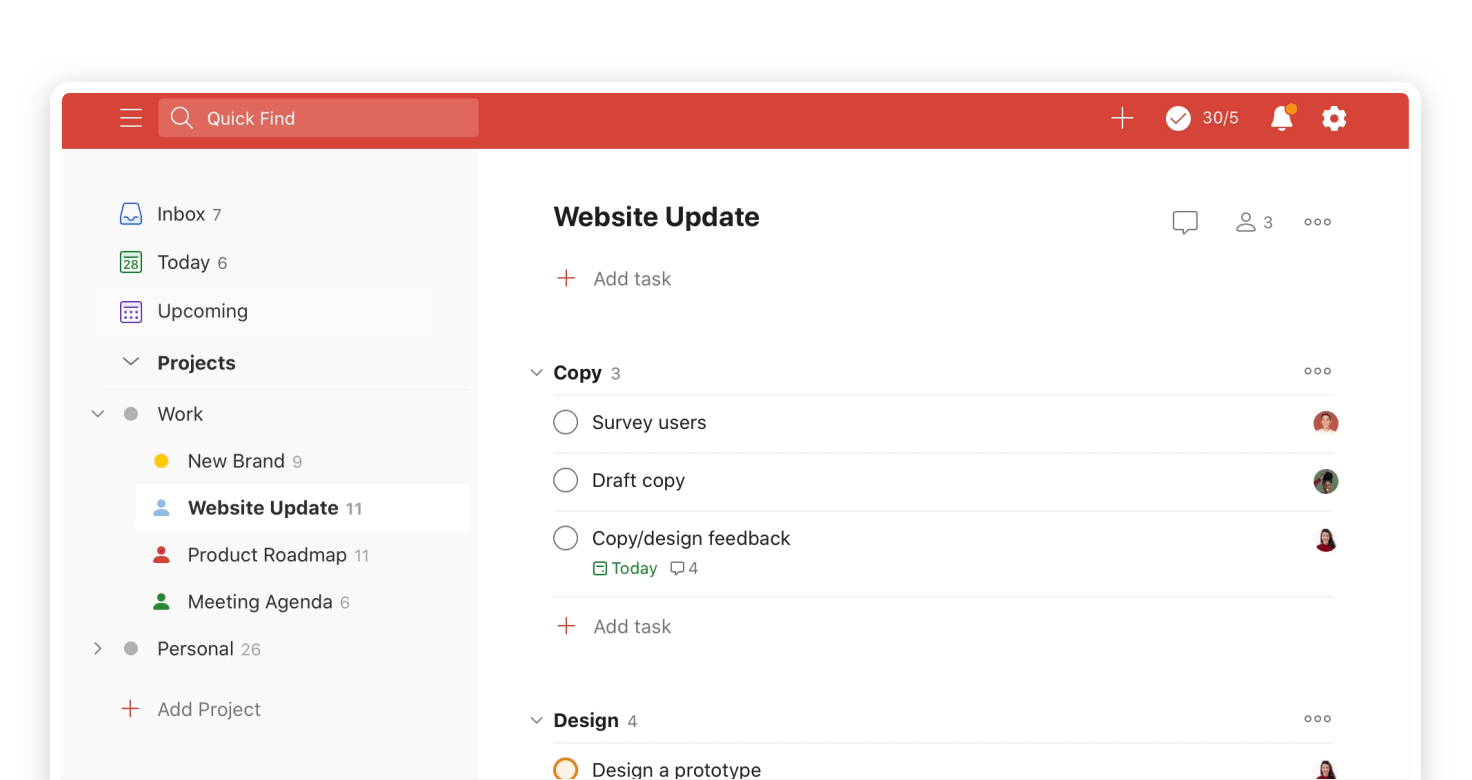A collection of screenshots from the web platforms and android apps of Asana, Trello, and Todoist, highlighting their UI/UX.
You can find your token from the Todoist Web app, at Todoist Settings - Integrations - API token. A special sync token, which denotes that we want a full sync, in contrast to an incremental sync. This is denoted with the. symbol, so we set synctoken=. Remember to follow up by adding due dates and priorities. You need to have a Todoist account to use this app, click here for more information and to sign up. To create a Todoist task: Click the '.' Option on any message. Select 'More actions'. Choose 'Add task to Todoist' or 'Add to Inbox'. Fill in the details for your task and press 'Add'.


Asana's platform is beautifully designed for both web and mobile. Menus are easy to read, intuitive, and each screen seems to have just the right amount of information on it to do what you need. It's a great experience using both, although some time needs to be spend to learn the ins and outs, given the large feature list.
There is room for improvement, however. Calendar integrations are poor for the free version, not transmitting times to Google calendar for tasks and not enabling notifications at due times on the mobile app. Add to that a very bland Android widget, and there are some regular frustrations with the UX simply because time-sensitive tasks are not managed well. However, the integrations that Asana provides with other apps, websites, and services makes up for that and then some!
The Trello platform is very functional and immensely powerful with their power-ups and integrations, but not the most user friendly, and most of those power-up features require paid access. Additionally, the features are not always easy to use, and the interface can be confusing to navigate, with some menus feeling totally overwhelming.

The design of the web platform leaves something to be desired, with squared edges and lots of unused space. The 'home' page is also less than useful, just showing a list of boards available rather than a summary of tasks.
Trello's android app follows similar design but is more in-line with typical android apps - rounded edges, useful menu pages, and great notifications. The actual experience of using the app (and the web platform) is mixed, with some tasks being really easy, and others taking a fair amount of time to figure out. Overall, the UI/UX performs low both in design and ease of use, though platform functionality as a whole ranks pretty well against the others.
Web view with Todoist is pretty bland, taking the form of primarily a text-based site. Not a lot of effort was put into making the design beautiful, though it is very straightforward and functional. Gac driver download for windows 10. Elyssa driver download for windows 10. I find myself navigating away from the web platform and using the Android app instead.
My default view for the web platform and Android app is the 'Upcoming' page, as it lists overdue, current, and upcoming tasks, making it easy to see all of them in list view. The board view is also really easy to assess on both platforms, and that's my go-to when adding tasks.
The experience on the android app feels natural. It follows the device preferences for dark/light mode and themes, and does everything I could want it to do. Todoist misses some of the more important features for business that Asana has, such as messaging and detailed tracking, but Todoist Business does seem to address some of those. In any case it probably requires paid access to use functionally for business, which is a bit beyond my intended uses right now.
.jpeg)
Todoist Web Application

Todoist Progressive Web App
In short, Todoist is a bit lacking in design effectiveness for the web app, but it's consistent with the clean, efficient Android app that they have created. The user experience, while not as feature-packed as the others, is stellar, including the Android widget and notifications.
